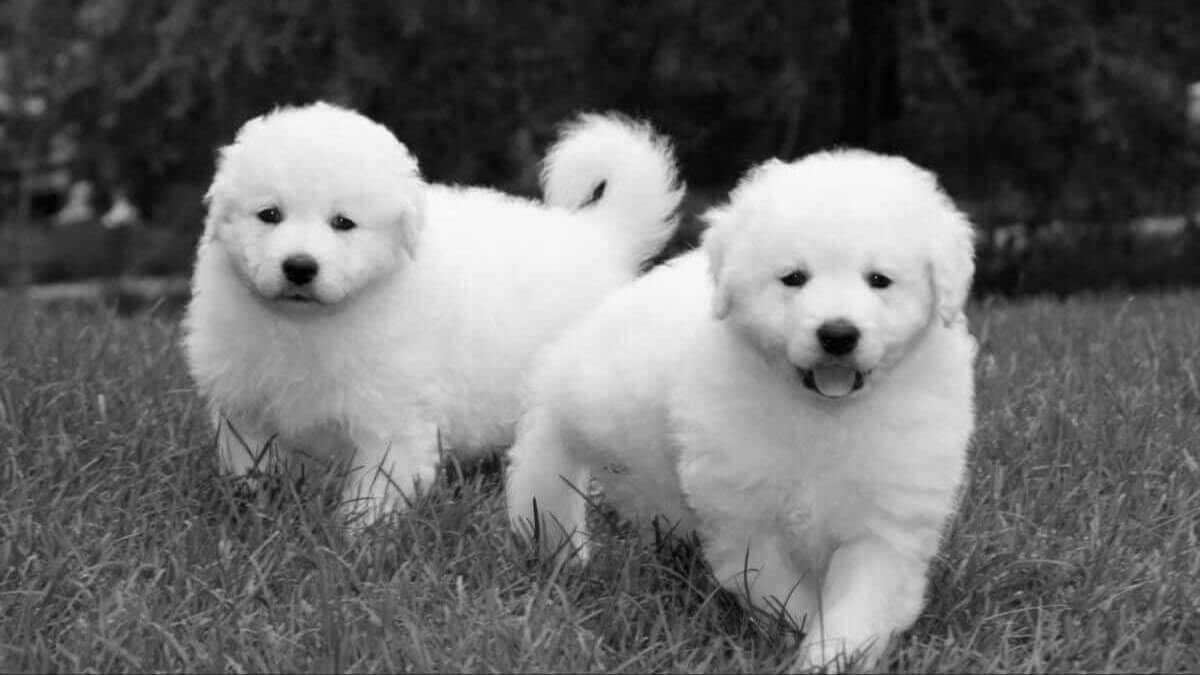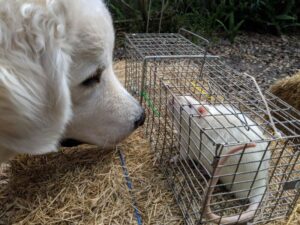
Barn Hunt for Beginners
Barn Hunt is a relatively new sport in which dogs are expected to hunt for rats safely hidden inside protective tubes on a hay bale course.

Home » Meet The Breeds » Kuvasz

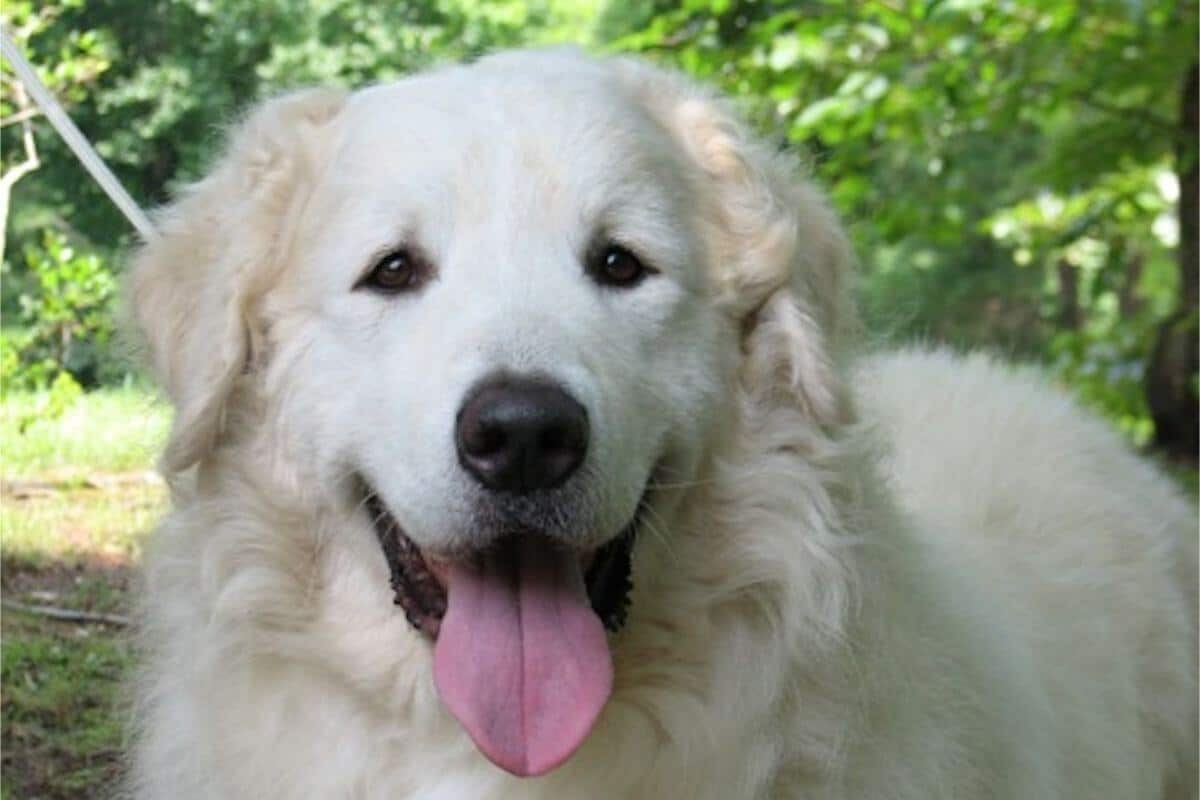
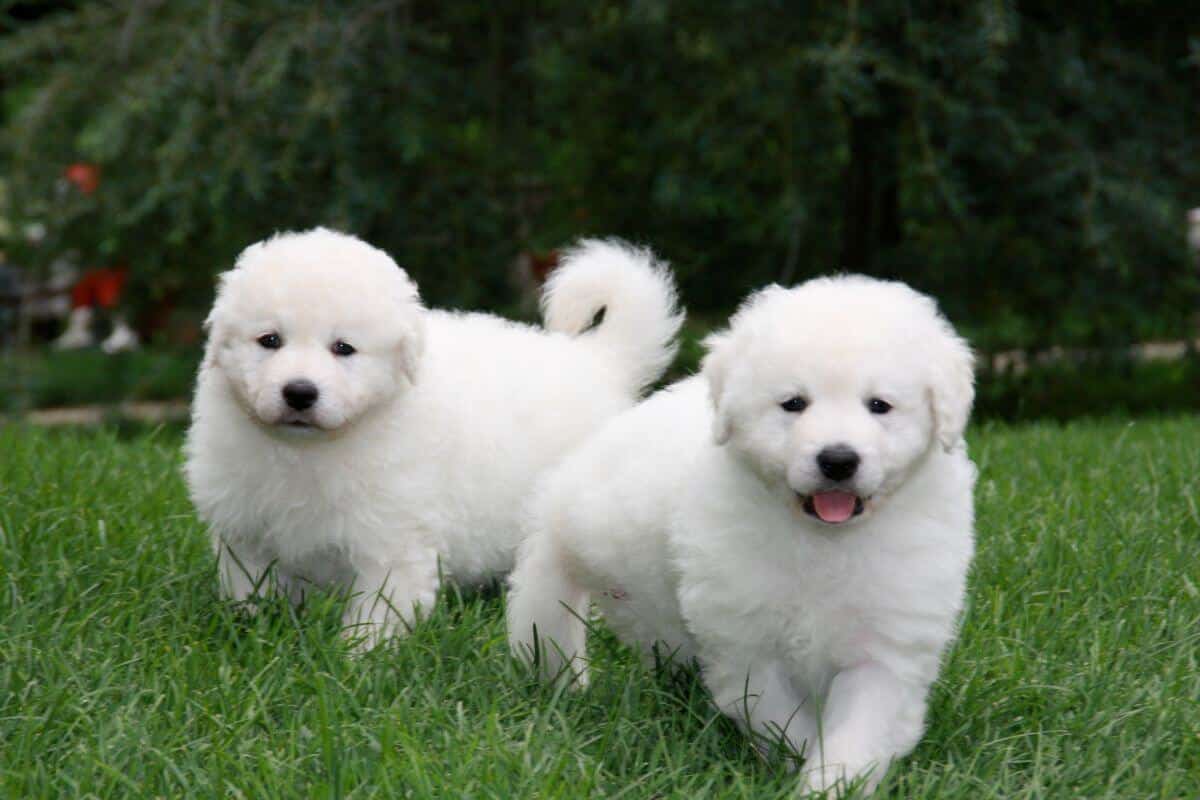
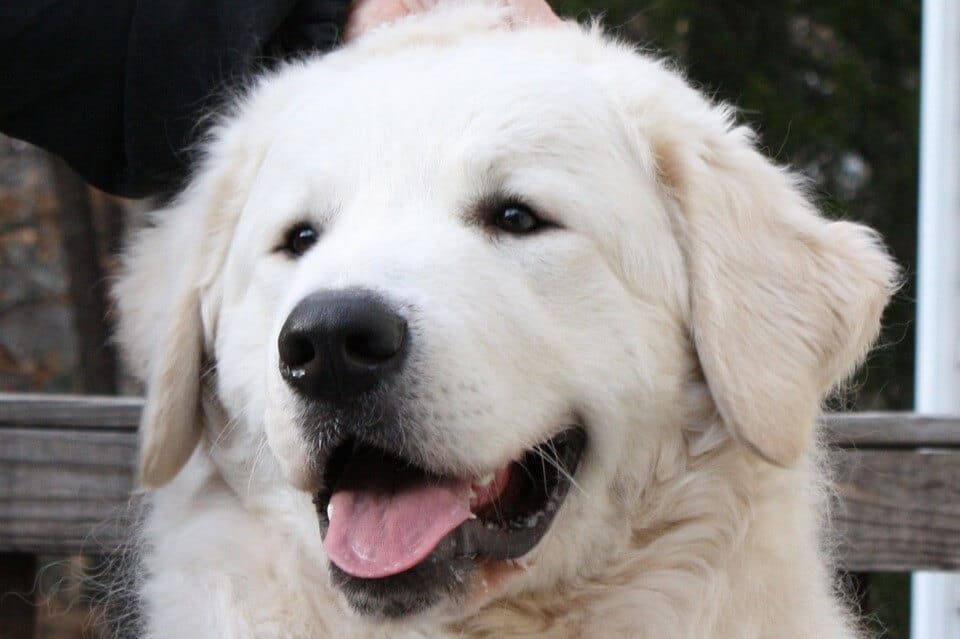
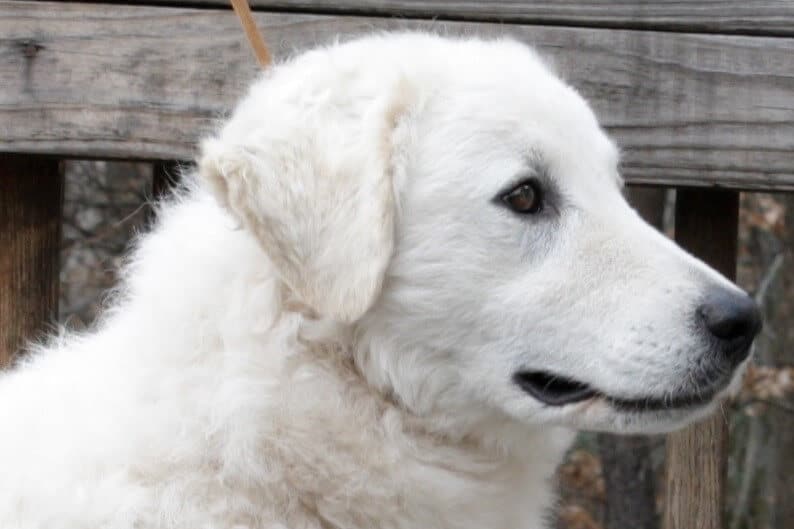
The Kuvasz is a large, powerful livestock guardian breed from Hungary. Bred to protect flocks from predators, the Kuvasz has a keen sense of alertness and a deep bond with its family and livestock. With a striking white coat and a courageous temperament, this breed is both a capable working dog and a devoted companion.
Working
26 – 30 inches
70 – 115 pounds
10 – 12 years
| Country of Origin | Hungary |
|---|---|
| Bred For | Guarding Livestock |
| Known For | Patterned White Coat, Fearlessness, Protectiveness |
| Popularity | Low |
| Temperament | Courageous, Determined, Spirited |
| Activities | Guarding Livestock, Conformation Shows, Dog Sports |
The Kuvasz is one of the oldest known livestock guardian breeds, with origins dating back thousands of years. It is believed that the breed descended from large dogs brought to the Carpathian Basin by the Magyars, the nomadic people who settled in present-day Hungary around the 9th century. These dogs were used primarily to guard livestock, including sheep and cattle, protecting them from wolves and other large predators. Unlike herding dogs, the Kuvasz worked independently, relying on its instincts rather than direction from human commands.
During the Middle Ages, the Kuvasz gained favor among the Hungarian nobility, particularly under the reign of King Matthias Corvinus (1458–1490), who kept Kuvaszok (plural for Kuvasz) for personal protection and gifted them to honored guests. While still valued as a working dog, the breed became a symbol of prestige and was often found in the royal court. Despite this, its primary role remained as a livestock guardian, particularly in rural areas where it was crucial for protecting valuable herds.
The breed’s population declined significantly during World War II, as many Kuvaszok were killed while guarding homes and property. The devastation nearly wiped out the breed, but dedicated breeders worked to revive the population in Hungary and abroad. The Fédération Cynologique Internationale (FCI) recognized the Kuvasz in 1954, helping to re-establish its presence in Europe.
In the United States, the American Kennel Club (AKC) officially recognized the Kuvasz in 1931, classifying it in the Working Group. Despite its impressive abilities as a guardian, the breed remains relatively unknown outside Hungary.
Adult Kuvasz males stand between 28 and 30 inches tall at the shoulder, while mature females range from 26 to 28 inches tall. Their solid structure is reflected in their weight, with males weighing 100 to 115 pounds and females weighing 70 to 90 pounds.
The Kuvasz balances strength with agility, making it an imposing and functional guardian. It is slightly longer than tall, with a deep chest and strong bone structure that provide endurance and agility. This sturdy frame allows it to move with power and grace, essential for its role as a protector of livestock.
Texture: The Kuvasz has a dense, double coat that provides insulation and protection in harsh weather conditions. The outer coat is medium-coarse in texture, wavy or slightly curled, while the undercoat is fine and soft, helping to regulate body temperature. The coat’s distribution follows a definite pattern over the body; the head, muzzle, ears, and feet are covered with short, smooth hair. The coat on the front of the forelegs up to the elbows and the hind legs below the thighs is also short and smooth. The back of the forelegs are feathered to the pastern, with the hair 2 to 3 inches long. The neck has a mane that extends to and covers the chest. The body and sides of the thighs are covered with a medium length coat. The back of the thighs and the entire tail are covered with hair 4 to 6 inches long. This coat type is self-cleaning and naturally repels dirt, but regular brushing is necessary to manage the shedding and maintain its condition.
| Standard Color | |
|---|---|
| White | y |
A Note About Color: The coat is white and the skin is heavily pigmented. The more slate gray or black pigmentation the better.
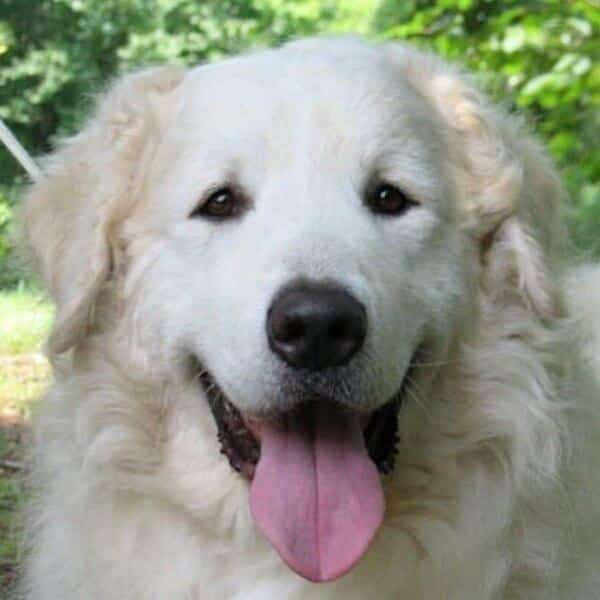
The Kuvasz has a long, well-furnished tail that reaches at least to the hocks. When at rest, the tail hangs naturally with a slight upward curve at the tip. When the dog is alert or in motion, it may be raised but never curled over the back. The tail is fully covered in thick, wavy hair, blending seamlessly with the rest of the coat.
Owning a Kuvasz requires dedication, experience, and a strong understanding of guardian breeds. These dogs are intelligent, independent, and highly protective, making them excellent livestock guardians and home protectors. While deeply loyal to their family, they are naturally reserved with strangers and require early socialization and training. Their large size, strength, and guarding instincts make them best suited for experienced handlers who can provide firm leadership and a structured environment.
The Kuvasz is generally a healthy and resilient breed, built for endurance and working in harsh conditions. With proper care, a Kuvasz typically lives between 10 and 12 years. Like all dog breeds, individuals can be prone to certain health issues, which responsible breeding and proactive care can help to minimize.
The most common health concerns in the Kuvasz include:
The Kuvasz is intelligent, independent, and deeply loyal, making it an excellent guardian and devoted companion. Bred to protect livestock without human direction, this breed is naturally wary of strangers and will assess situations independently before reacting. Early and consistent socialization is essential to help them distinguish between real threats and normal interactions. While affectionate with their family members, they are not overly needy and prefer to maintain a sense of independence.
Kuvaszok are highly protective and territorial, making them excellent watchdogs, but their strong-willed nature requires experienced handling. They get along well with children when properly socialized but need supervision due to their size and guarding instincts. They can be reserved or even combative towards unfamiliar dogs, especially those perceived as a threat to their home or family. While they are deeply devoted, they thrive in homes where their guardian nature is understood and respected.
A well-balanced diet is essential for maintaining the health and energy levels of the Kuvasz. As a large, active breed, they require high-quality food formulated for large or giant breeds, ensuring proper growth, joint support, and muscle maintenance. Puppies need a large-breed puppy formula to support controlled growth, as rapid weight gain can contribute to joint problems. Overfeeding and excessive calcium intake should be avoided to prevent orthopedic issues.
Adult Kuvaszok typically eat between 3 and 5 cups of high-quality dry food per day, split into two meals. Puppies should be fed smaller, more frequent meals until they transition to an adult feeding schedule. Fresh water should always be available, and slow-feed bowls may be useful for dogs that eat too quickly. Treats should be given in moderation, and foods harmful to dogs, such as onions, chocolate, and grapes, must be avoided.
Training a Kuvasz requires patience, consistency, and a firm but fair approach. As an independent thinker bred for self-reliant guarding, the Kuvasz does not respond well to harsh corrections or repetitive training methods. Positive reinforcement, clear boundaries, and structured leadership are essential to earning the trust and cooperation of this breed. While intelligent and capable of learning commands, these dogs may choose to obey selectively, especially if they perceive a situation differently from their handler.
Socialization from an early age is critical to prevent excessive suspicion toward strangers and unfamiliar environments. Without proper exposure, Kuvaszok can become overly protective or assertive. Leash training is particularly important due to the breed’s strength and size, as an untrained adult can be difficult to control. With proper training and respect for their guarding instincts, the Kuvasz can become a well-mannered yet confident protector that excels in both the family home and in working environments.
The Kuvasz is an active and athletic breed that requires regular exercise to stay physically and mentally fit. As a guardian breed, these dogs naturally patrol their territory rather than engaging in high-energy play, but they still need daily activity to prevent boredom. Long walks, free movement in a securely fenced area, and mentally stimulating tasks such as obedience training or problem-solving games can help to meet their needs. They are not suited for intense or repetitive exercise, such as long-distance running, but they do enjoy hikes and moderate outdoor activities.
| Energy Level | Moderate |
|---|---|
| Exercise Requirements | 1 Hour/Day (Minimum), Daily Walks, Vigorous Running, Regular Exercise, Mental Stimulation |
Kuvasz puppies should have controlled exercise to protect their developing joints, avoiding excessive running or jumping. Over-exercising at a young age can contribute to joint and bone issues later in life. Adult Kuvaszok benefit from structured but moderate exercise, with a focus on maintaining their endurance and strength without overexertion.
The Kuvasz has a thick, double coat that sheds year-round, with heavier shedding in spring and fall. Weekly brushing is necessary to remove loose hair and prevent matting, especially in areas where the coat is longer and more prone to tangling. The coat of this breed naturally repels dirt, so frequent bathing is unnecessary, but occasional baths will help to maintain cleanliness, particularly for indoor dogs.
| Coat Type | Double, Medium Coarse, Wavy to Straight |
|---|---|
| Grooming Requirements | Weekly Brushing, Occasional Bathing, Routine Ear Cleaning, Periodic Nail Trimming, Regular Tooth Brushing |
Regular grooming also includes ear cleaning, nail trimming, and dental care. Due to the Kuvasz’s size and strength, it is important to introduce grooming routines at an early age to make sure that the dog is comfortable with handling. While the coat requires consistent maintenance, it does not require trimming or special styling, as the natural texture provides protection against harsh weather conditions.
The Kuvasz is best suited for homes with ample space, as the breed is territorial and naturally inclined to patrol the surrounding environment. These dogs are not ideal for apartment living, as their guarding instincts make them highly alert to sounds and movement, which can lead to frequent barking. A securely fenced yard provides them with the ability to move freely while maintaining control over “their” territory.
The thick coat of the Kuvasz allows these dogs to handle cold weather exceptionally well, but they may struggle in hot climates. Proper shade, fresh water, and limited activity during peak temperatures are necessary to prevent overheating. While they are independent, they thrive in homes where their protective instincts are understood, and where they are given both structure and companionship. Kuvaszok form deep bonds with their families and do not like being left alone for prolonged periods.
Kuvasz puppies require careful training, socialization, and structured guidance to develop their natural guarding instincts appropriately. These pups grow rapidly but mature slowly, both physically and mentally, requiring controlled exercise and a balanced diet to support healthy development. Early exposure to different people, environments, and experiences is essential to prevent excessive wariness or overprotectiveness in adulthood.
Bringing home a Kuvasz puppy requires early training and socialization to help the pup develop into a well-mannered adult. Crate training is useful for housebreaking and providing a secure space to rest and sleep, while structured socialization helps the pup become comfortable with new experiences. Because of the breed’s strong guarding instincts, exposure to different people, animals, and situations from an early age is crucial to prevent excessive suspicion or territorial behavior.
Feeding should follow a controlled schedule with a large-breed puppy formula to support steady growth and prevent joint issues. The Kuvasz puppy should be fed three to four small meals a day until about six months old, then transitioned to two meals per day. Overfeeding or rapid weight gain should be avoided to reduce the risk of orthopedic problems.
Exercise should be moderate and carefully managed to protect developing bones and joints. Short, supervised walks and free-play sessions in a secure area are preferable to intense running or jumping. Early training should focus on obedience, leash manners, and impulse control, as the Kuvasz can quickly become strong-willed and challenging to manage without setting clear boundaries.
Regular vet visits, vaccinations, and preventive care are essential during puppyhood. Establishing grooming routines early, such as brushing and nail trimming, helps the puppy become comfortable with handling as it grows.
The Kuvasz is recognized by the world’s leading registries and kennel organizations, which categorize the breed into a specific Group based on its unique characteristics. This breed is recognized worldwide under the following Group designations:
| Organization | Group Designation |
|---|---|
| AKC (American Kennel Club) | Working |
| UKC (United Kennel Club) | Guardian |
| CKC (Canadian Kennel Club) | Working |
| ANKC (Australian National Kennel Council) | Working |
| RKC (The Royal Kennel Club) | Pastoral |
| FCI (Fédération Cynologique Internationale) | Group 1: Sheepdogs and Cattle Dogs; Section 1: Sheepdogs |
The ideal Kuvasz is described by a Breed Standard that is approved by each of the world’s leading registries and kennel organizations. The Breed Standards for this breed may be found in the following links:
| Organization | Breed Standard |
|---|---|
| American Kennel Club | AKC Kuvasz Breed Standard |
| United Kennel Club | UKC Kuvasz Breed Standard |
| Canadian Kennel Club | CKC Kuvasz Breed Standard |
| Australian National Kennel Council | ANKC Kuvasz Breed Standard |
| The Royal Kennel Club | RKC Kuvasz Breed Standard |
| Fédération Cynologique Internationale | FCI Kuvasz Breed Standard |
Although the Kuvasz is not a common breed, some individuals may find themselves in need of new homes due to changes in their owners’ circumstances.
While Kuvaszok are not typically seen in animal shelters, individuals may occasionally be available locally.
Yes, the Kuvasz sheds year-round, with heavier seasonal shedding in the spring and fall. Regular brushing helps to manage the loose hair and keeps the coat clean and healthy.
No, the Kuvasz is not hypoallergenic, as the breed has a thick double coat that sheds regularly. The hair can trap dander and allergens, making these dogs unsuitable for allergy sufferers.
The Kuvasz typically lives between 10 and 12 years, depending on genetics, diet, and overall care. Proper nutrition, regular exercise, and routine veterinary check-ups contribute to a dog’s longevity.
The Kuvasz can be an excellent family dog for experienced owners, as the breed is loyal, protective, and deeply bonded to the household. However, these dogs require early socialization and firm leadership to make sure they integrate well with children and other pets.
Yes, the Kuvasz is naturally alert and will bark to warn of anything unusual. Strong guarding instincts make for a vocal watchdog, although early training can help to manage any excessive barking while maintaining the breed’s protective nature.

Barn Hunt is a relatively new sport in which dogs are expected to hunt for rats safely hidden inside protective tubes on a hay bale course.
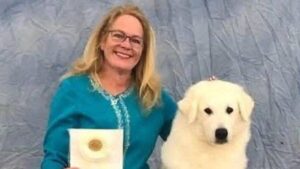
Robin Miller of Rebel Ridge shares 20 years of Kuvasz breeding focused on structure, loyalty, and preserving a rare guardian breed.

Interview with Robin & Tony Miller: their 32-year journey as Kuvasz breeders/owner-handlers, mentoring, and victories in the ring.
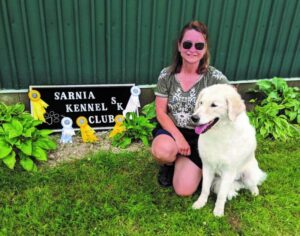
Doreen MacPherson is the breeder behind Galaxy Kuvasz. Read about the kennel’s beginnings, champion dogs, Kuvasz puppies, photos & more!

Lynn Roberts is the breeder behind Aegys Kennels Kuvasz. Read about the kennel’s beginnings, pedigree, champion dogs, puppies, photos & more!
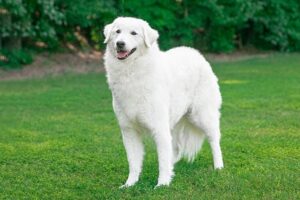
Randy Ham is the breeder behind Peachtree Kuvasz. Read about the kennel’s beginnings, pedigree, champion dogs, Kuvasz puppies, photos & more!
The best way to ensure a long and happy relationship with a purebred dog is to purchase one from a responsible breeder. Not sure where to begin?
Contact the National Parent Club’s Breeder Referral Program, which is listed on the AKC Breeder Referral Contacts page.
